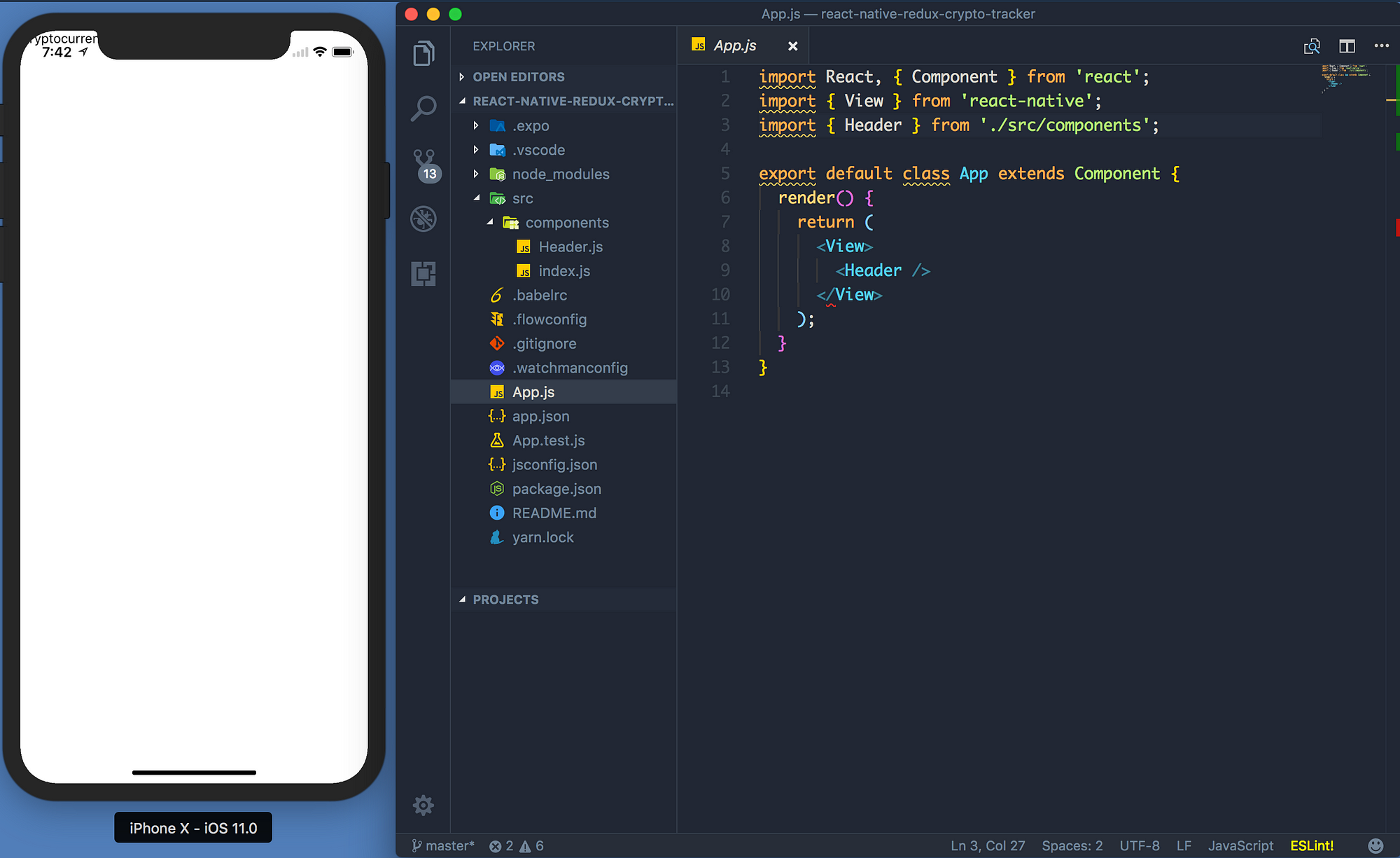
- #React native tabview full screen install#
- #React native tabview full screen update#
- #React native tabview full screen for android#
Next, add the following code snippet: export const data = [ĭescription: 'The Cliffs of Cinque Terre',ĭescription: 'Rialto Bridge, Venezia, Italy', This file will contain the mockup data that will display inside the list view in the first tab. To start, let's add them inside a separate directory called screens/ and create the first file with the name, data.js. The first tab is used to display a list of items with images so that when the tab bar is added to the app, we can configure its translucency. The tab bar we're building in this example app will display three different tabs. Here is the default app running after the build for iOS: Add mockup screens
#React native tabview full screen for android#
Similarly, the build command for Android is npx react-native run-android.


To build the app for iOS, execute the following command npx react-native run-ios from a terminal window. Now that we have installed and configured everything required to build and run our app, we can now edit the App.js file-otherwise known as the entry point for the React Native app.
#React native tabview full screen update#
Then, add the following to the ios/Podfile and run a cd ios & pod update from a terminal window: pod 'RNVectorIcons', :path => './node_modules/react-native-vector-icons'įor Android, add the following snippet in the file android/app/adle: apply from: "././node_modules/react-native-vector-icons/adle"Īnd that's all you need to setup the react-native-vector-icons library! The react-native-vector-icons module needs a bit more configuration for iOS and Android platforms.įor iOS, you need to add the following inside ios/customTabBar/ist: UIAppFonts Npx pod-install ios Installing react-native-vector-icons
#React native tabview full screen install#
If you do not have CocoaPods installed on your local dev machine, follow the alternate command below: cd ios & pod install Then, for iOS, install the CocoaPods for all these dependencies by navigating inside the ios directory in a terminal window and executing the following command. After installing these dependencies, import the Gesture Handler library at the top of the index.js file of your React Native app: import 'react-native-gesture-handler' Yarn add react-native-reanimated react-native-gesture-handler react-native-screens react-native-safe-area-context react-native-vector-icons note that to successfully implement this tutorial, you will need to use the React Navigation v5 library. Next, navigate inside the project directory created by react-native-cli and install the following dependencies: npx react-native init customTabBar To create a new React Native app, execute the following command from a terminal window on your local dev environment. Have react-native-cli installed, or use npx.

Have access to a package manager like npm, yarn, or npx.To get the most out of this tutorial, you'll want to familiarize yourself with JavaScript/ES6 and meet the following requirements in your local dev environment:

We'll start by building a simple tab bar and then make it translucent using a blur view. In this post, we're going to create a custom tab bar using the React Navigation library bottom tabs component. The React Navigation library does a fantastic job of providing various navigation patterns for things like stacks, tabs, and drawers that can be implemented and customized based on the UI design of your app. When developing these apps, it's best to create navigation that allows users to move easily from one screen to the next. React Native is an amazing tool for creating beautiful and high-performing mobile applications capable of running on both iOS and Android devices.


 0 kommentar(er)
0 kommentar(er)
